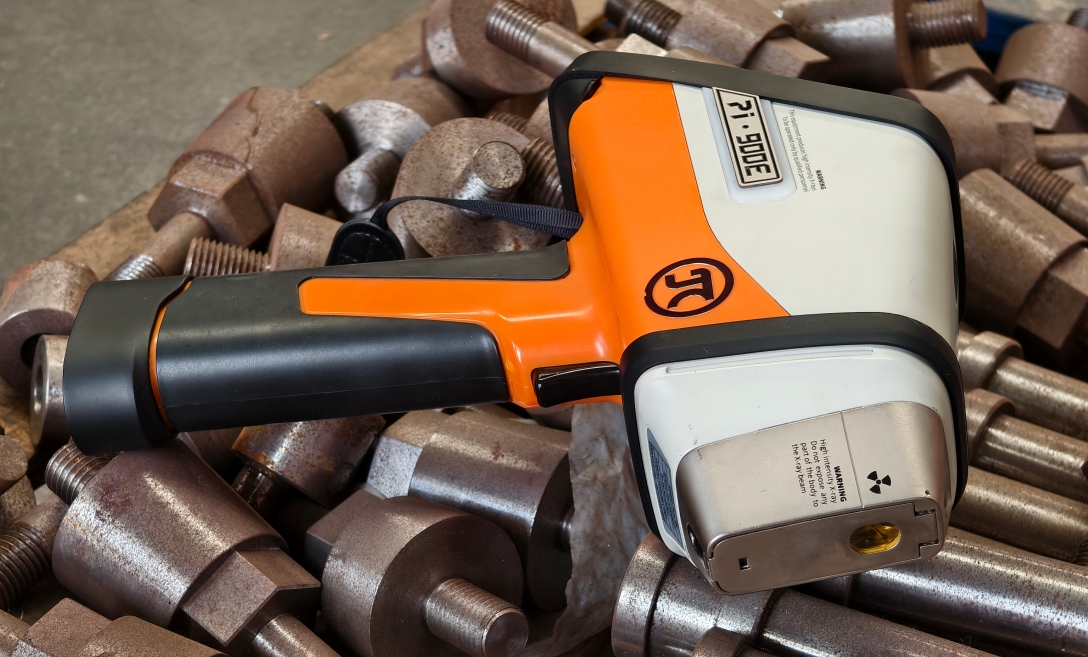
Alloy
A high-tech enterprise focusing on the development and application of X-ray technology products, committed to becoming a leading supplier of X-ray industrial testing solutions.
X-ray Fluorescence Analyzers for Metal Identification and Purity Testing
X-ray fluorescence (XRF) analyzers have revolutionized the way metals are identified and tested for purity across various industries. From quality control in manufacturing to environmental monitoring, these portable and non-destructive tools have become indispensable for professionals in metallurgy, recycling, and material science.
What is X-ray Fluorescence?
X-ray fluorescence is a non-destructive analytical technique used to determine the elemental composition of materials. When a sample is exposed to high-energy X-rays, the atoms in the material absorb the energy and emit secondary (or fluorescent) X-rays. These fluorescent X-rays have characteristic wavelengths that correspond to the elements present in the material. By analyzing these emissions, an XRF analyzer can accurately identify the elements and quantify their concentrations.

How Does XRF Work in Metal Identification?
XRF analyzers can identify a wide range of metals, including ferrous and non-ferrous materials. The process involves the following steps:
Excitation: The sample is exposed to a beam of X-rays.
Fluorescence Emission: Elements in the sample absorb the X-rays and re-emit secondary X-rays.
Detection: The emitted X-rays are detected by a sensor, and their energy levels are analyzed.
Elemental Analysis: The analyzer compares the detected X-rays to known spectra, identifying the elements and their concentrations in the material.
The results are often displayed in real-time, providing immediate feedback on the composition of the metal.
Applications of XRF Analyzers in Metal Testing
Metal Purity Testing: One of the primary uses of XRF is to test the purity of metals. Whether it's gold, silver, copper, or aluminum, XRF can measure the exact elemental composition of a metal sample, ensuring it meets purity standards. This is critical in industries like mining, recycling, and precious metal refining, where even small variations in purity can affect the product’s value and performance.
Alloy Identification: Many industrial processes require the identification of specific alloys. XRF analyzers can distinguish between different alloys by detecting subtle variations in their elemental composition. This helps ensure that the right materials are used in production and prevents costly errors.
Environmental Testing: XRF is also used for environmental monitoring, such as testing metals in soil, water, and air. It helps identify contaminants, including heavy metals like lead, cadmium, and mercury, which can pose serious health risks. XRF analyzers can be used in the field, providing fast and accurate results for environmental testing.
Quality Control in Manufacturing: XRF analyzers are widely used in quality control to verify the composition of metals used in manufacturing processes. Whether it's in the automotive, aerospace, or construction industry, ensuring that metals meet specific standards is essential for product performance and safety.
Advantages of Using XRF for Metal Analysis
Non-destructive: XRF analysis does not alter or damage the material being tested, making it ideal for quality control and on-site testing.
Fast and Accurate Results: XRF analyzers provide real-time results, allowing for quick decision-making in production and testing environments.
Portable and Easy to Use: Modern XRF analyzers are lightweight and portable, enabling testing in remote locations and minimizing downtime in manufacturing processes.
Minimal Sample Preparation: Unlike other methods of metal analysis, XRF requires little to no sample preparation, making the process more efficient.

Terras Pi900E Handheld Alloy Analyzer
The Pi 900E is a high-precision, portable alloy analyzer that offers fast, accurate elemental detection for industries like metal recycling and manufacturing. Its advanced XRF tech identifies alloys (stainless steel, titanium, etc.) in seconds, with real-time data, Wi-Fi connectivity, and customizable calibrations. Built for fieldwork, it features a rugged, lightweight design and intuitive interface for seamless operation anywhere.
Conclusion
X-ray fluorescence analyzers are invaluable tools for metal identification and purity testing, offering speed, accuracy, and portability. They are transforming industries ranging from mining to recycling, helping ensure quality control, regulatory compliance, and environmental safety. As technology continues to improve, the applications of XRF will only expand, making it an even more essential tool in the analysis of materials.
Join Us
Subscribe to our email list for updates & promotions.



